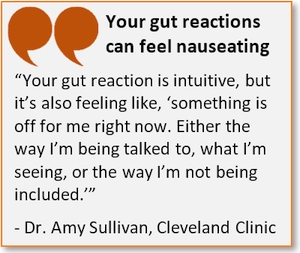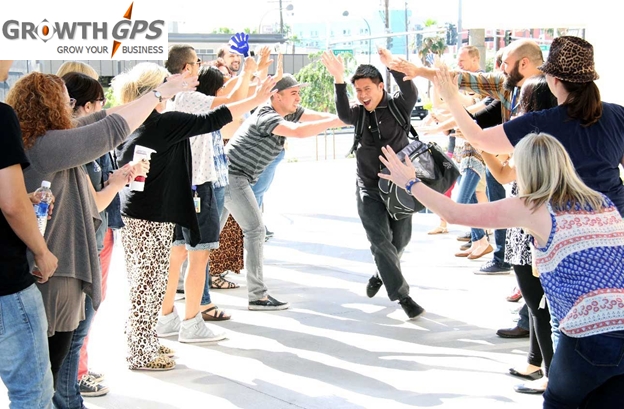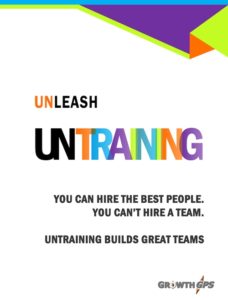Toxic workplace culture…
Have you ever walked into a place and cringed at how it made you feel?
Ever felt “heaviness in the air?”
Felt intimidated by how quiet a place is?
Or the opposite, you felt like turning away because of all the shouting going on? How about when there’s too many 4-letter words?
How do you feel when you see the last “Employee of the Month” posting is over 3 years old?
» Contrast how you feel in any of those situations with how you feel entering a space filled with laughter, energy, and a welcoming smile as someone approaches you saying “Hi.”
It’s a fact, you can physically feel workplace culture in a short amount of time. Both good and bad.
Clinical health psychologist Amy Sullivan, PsyD, indicates “A toxic work environment is a feeling and not necessarily a checklist. People know when they’re in a toxic work environment because you pay attention to what your gut is sharing with you as well as any physical responses.” As Director of Behavioral Medicine at the Mellen Center of the Cleveland Clinic, Sullivan deals with people who’ve stayed in a toxic environment for too long.
Sullivan indicates our guts give us a nauseated feeling when we take in situations that don’t align with personal values. Our guts tell us things aren’t right when we see things like –
- Finger pointing

- Control & intimidation
- Loud “talking at” people
- Embarrassing behaviors
- Blatant discrimination
- Extreme quiet as people hide behind computer screens
The more we experience these, the more stress they pile on. Live with this kind of stress over an extended period, and the culture that breeds it becomes toxic.
We all read the words “toxic culture,” what it really means is living with behaviors that don’t align with our values over time, to where it’s simply exhausting. Things are harder than they should be. The mere thought of going to work is exhausting.

How do you know when a work environment is going bad?
In the broadest sense, the two main indicators are shouting and silence. Obviously, if you have employees angrily yelling at one another or, worse yet, having physical altercations, toxicity levels are dangerously high. Sometimes, competition among co-workers or business units can create “shouting” in the sense that complaints and disagreements become commonplace — and they start escalating.
Detecting “silence” can be more difficult. Sometimes a workplace is literally quiet because no one is speaking to one another. Everyone is tucked away in their own isolated workspaces, plugged into headphones and isolated from management and co-workers. This might not be a bad thing for some types of positions, but this atmosphere can be a breeding ground for misunderstandings, one-way communication and fear.
Silence can also take place in a work environment overcome by gossip and misinformation. No one speaks openly; instead, hushed conversations take place behind closed doors or in isolated areas. And these discussions sow the seeds of distrust and disgruntlement. Suddenly you’ve lost one or more good workers because of things they heard through the grapevine, rather than valid organizational communications.
» What’s important to understand is that a toxic culture to one person is not necessarily toxic for everyone.
Like the frog in the slowly warming-to-a-boil pot of water, we all get used to things. Even if those things are often considered abnormal. What at first may be shocking, over time becomes normal. It’s called normalizing.
» As the leader of your organization, you are likely not aware of how your workplace culture impacts different people. What’s important to recognize is every culture has room for improvement.
Launch Your Culture Development Journey
 Developing your workplace culture as a healthier, more intentional one doesn’t happen overnight. It’s not changing the org chart or job descriptions. It’s a journey. That journey begins with small steps, like practicing anything new – a new sport or a new technique – building confidence that allows taking bigger steps.
Developing your workplace culture as a healthier, more intentional one doesn’t happen overnight. It’s not changing the org chart or job descriptions. It’s a journey. That journey begins with small steps, like practicing anything new – a new sport or a new technique – building confidence that allows taking bigger steps.
Our team at Growth GPS can support your journey’s launch and evolution – it’s what we do best!
- Our ASSESSMENTS help you understand the current state with diagnostics that guide improvement
- Our CONSULTING is a collaborative effort with your team to define the future state and map the journey
- Our CULTURE DEVELOPMENT PROCESS delivers real business performance and results – it’s proven!
- Our innovative LEADERSHIP DEVELOPMENT TRAINING supports employees top-to-bottom with the skills to be successful in the new, intentional culture – in fact, the training speeds the journey to the future.



